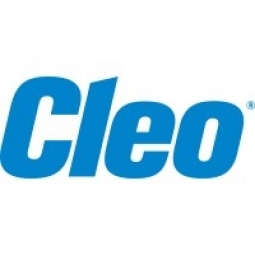Customer Company Size
SME
Region
- America
Country
- United States
Product
- EXTOL EDI Integrator for i (EEI)
- EXTOL Secure Exchange (ESX)
- EXTOL VAN
Tech Stack
- EDI
Implementation Scale
- Enterprise-wide Deployment
Impact Metrics
- Cost Savings
- Productivity Improvements
Technology Category
- Application Infrastructure & Middleware - Data Exchange & Integration
Applicable Industries
- Retail
Applicable Functions
- Logistics & Transportation
Use Cases
- Supply Chain Visibility
Services
- System Integration
About The Customer
Dorcy is a company that has been in the flashlight marketing business for over 55 years. The company supplies its products to major retailers, including Wal-Mart, Lowe's, and Sears. Dorcy has a significant presence in the retail industry and has established a strong reputation for its high-quality products. The company operates on a global scale, managing a complex supply chain that involves numerous trading partners. Dorcy's operations require a robust and efficient system for managing its supply chain to ensure smooth operations and maintain its reputation for reliability.
The Challenge
Dorcy, a company that has been marketing flashlights for over 55 years and supplies major retailers such as Wal-Mart, Lowe's, and Sears, faced a significant challenge. The company needed to implement an automated e-business solution to manage its global supply chain operations quickly and cost-effectively. The focus was to find a robust integration solution that could help reduce high VAN cost and be rapidly deployed with minimal staff involvement.
The Solution
Dorcy decided to implement the EXTOL EDI Integrator for i (EEI), EXTOL Secure Exchange (ESX), and EXTOL VAN. These solutions allowed Dorcy to onboard new trading partners in a matter of hours, significantly reducing the time and effort required for this process. The implementation of these solutions also led to a reduction in chargebacks by at least 90%, significantly improving the company's financial performance. Additionally, the monthly VAN cost was reduced by about 75%, leading to substantial cost savings for the company. The solutions were rapidly deployed with minimal staff involvement, meeting the company's requirement for a quick and cost-effective implementation.
Operational Impact
Quantitative Benefit

Case Study missing?
Start adding your own!
Register with your work email and create a new case study profile for your business.
Related Case Studies.

Case Study
Improving Production Line Efficiency with Ethernet Micro RTU Controller
Moxa was asked to provide a connectivity solution for one of the world's leading cosmetics companies. This multinational corporation, with retail presence in 130 countries, 23 global braches, and over 66,000 employees, sought to improve the efficiency of their production process by migrating from manual monitoring to an automatic productivity monitoring system. The production line was being monitored by ABB Real-TPI, a factory information system that offers data collection and analysis to improve plant efficiency. Due to software limitations, the customer needed an OPC server and a corresponding I/O solution to collect data from additional sensor devices for the Real-TPI system. The goal is to enable the factory information system to more thoroughly collect data from every corner of the production line. This will improve its ability to measure Overall Equipment Effectiveness (OEE) and translate into increased production efficiencies. System Requirements • Instant status updates while still consuming minimal bandwidth to relieve strain on limited factory networks • Interoperable with ABB Real-TPI • Small form factor appropriate for deployment where space is scarce • Remote software management and configuration to simplify operations

Case Study
Digital Retail Security Solutions
Sennco wanted to help its retail customers increase sales and profits by developing an innovative alarm system as opposed to conventional connected alarms that are permanently tethered to display products. These traditional security systems were cumbersome and intrusive to the customer shopping experience. Additionally, they provided no useful data or analytics.

Case Study
How Sirqul’s IoT Platform is Crafting Carrefour’s New In-Store Experiences
Carrefour Taiwan’s goal is to be completely digital by end of 2018. Out-dated manual methods for analysis and assumptions limited Carrefour’s ability to change the customer experience and were void of real-time decision-making capabilities. Rather than relying solely on sales data, assumptions, and disparate systems, Carrefour Taiwan’s CEO led an initiative to find a connected IoT solution that could give the team the ability to make real-time changes and more informed decisions. Prior to implementing, Carrefour struggled to address their conversion rates and did not have the proper insights into the customer decision-making process nor how to make an immediate impact without losing customer confidence.

Case Study
Ensures Cold Milk in Your Supermarket
As of 2014, AK-Centralen has over 1,500 Danish supermarkets equipped, and utilizes 16 operators, and is open 24 hours a day, 365 days a year. AK-Centralen needed the ability to monitor the cooling alarms from around the country, 24 hours a day, 365 days a year. Each and every time the door to a milk cooler or a freezer does not close properly, an alarm goes off on a computer screen in a control building in southwestern Odense. This type of alarm will go off approximately 140,000 times per year, equating to roughly 400 alarms in a 24-hour period. Should an alarm go off, then there is only a limited amount of time to act before dairy products or frozen pizza must be disposed of, and this type of waste can quickly start to cost a supermarket a great deal of money.

Case Study
Supermarket Energy Savings
The client had previously deployed a one-meter-per-store monitoring program. Given the manner in which energy consumption changes with external temperature, hour of the day, day of week and month of year, a single meter solution lacked the ability to detect the difference between a true problem and a changing store environment. Most importantly, a single meter solution could never identify root cause of energy consumption changes. This approach never reduced the number of truck-rolls or man-hours required to find and resolve issues.








